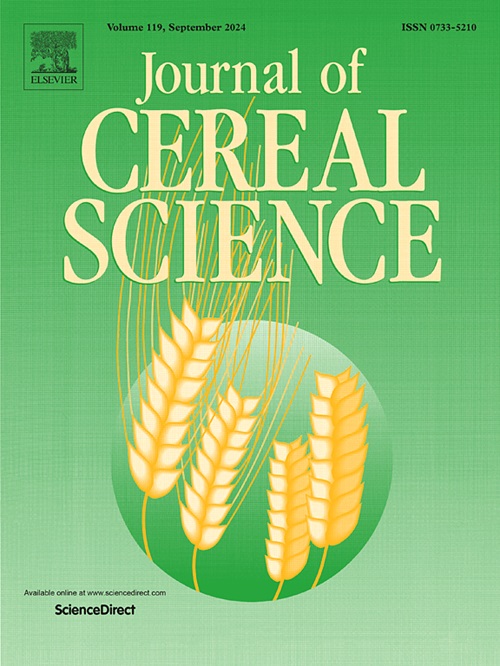优化低速旋转恒温回火的含水率和时间以提高籼米粉的理化性能
IF 3.7
2区 农林科学
Q2 FOOD SCIENCE & TECHNOLOGY
引用次数: 0
摘要
本研究采用低速旋转恒温回火技术对籼稻进行动态回火。系统研究了回火水分(20% ~ 28%)和回火时间(2 ~ 12 h)对籼米半干粉理化性质的影响。通过分析不同水分水平下受损淀粉含量和粒径分布,以及在回火时间内水分分布、微观结构和剪切纹理的测量,通过综合分析确定了最佳参数。通过对受损淀粉含量、粒径、水化性能、糊化性能、热性能、x射线衍射(XRD)和流变性能的综合分析,确定最佳参数为含水率为26%,回火10 h,得到的面粉品质与湿法面粉相当。值得注意的是,在26%的水分条件下,缩短2小时的程序可以增强水化能力和剪切稳定性,显示出节能处理的潜力。研究结果为高品质籼米粉的工业化生产提供了理论和实践基础。本文章由计算机程序翻译,如有差异,请以英文原文为准。

Optimization of moisture content and duration in low-speed rotational thermostatic tempering for enhanced physicochemical properties of indica rice flour
In this study, a novel low-speed rotational thermostatic tempering (LSRTT) technique was applied to indica rice for dynamic tempering. The effects of tempering moisture content (20 %–28 %) and duration (2–12 h) on the physicochemical properties of semi-dry-milled indica rice flour were systematically investigated. Optimal parameters were determined by analyzing damaged starch content and particle size distribution under varying moisture levels, alongside measurements of water distribution, microstructure, and shear texture across tempering durations through comprehensive analysis. Through comprehensive analyses including damaged starch content, particle size, hydration properties, gelatinization behaviors, thermal properties, X-ray diffraction (XRD), and rheological properties, the optimal parameters were identified as 26 % moisture content with 10 h tempering, yielding flour quality comparable to wet-processed. Remarkably, a shortened 2 h protocol at 26 % moisture achieved enhanced hydration capacity and shear stability, demonstrating the potential for energy-efficient processing. These findings provode theoretical and practical foundations for industrial-scale production of high-quality indica rice flour.
求助全文
通过发布文献求助,成功后即可免费获取论文全文。
去求助
来源期刊

Journal of Cereal Science
工程技术-食品科技
CiteScore
7.80
自引率
2.60%
发文量
163
审稿时长
38 days
期刊介绍:
The Journal of Cereal Science was established in 1983 to provide an International forum for the publication of original research papers of high standing covering all aspects of cereal science related to the functional and nutritional quality of cereal grains (true cereals - members of the Poaceae family and starchy pseudocereals - members of the Amaranthaceae, Chenopodiaceae and Polygonaceae families) and their products, in relation to the cereals used. The journal also publishes concise and critical review articles appraising the status and future directions of specific areas of cereal science and short communications that present news of important advances in research. The journal aims at topicality and at providing comprehensive coverage of progress in the field.
 求助内容:
求助内容: 应助结果提醒方式:
应助结果提醒方式:


